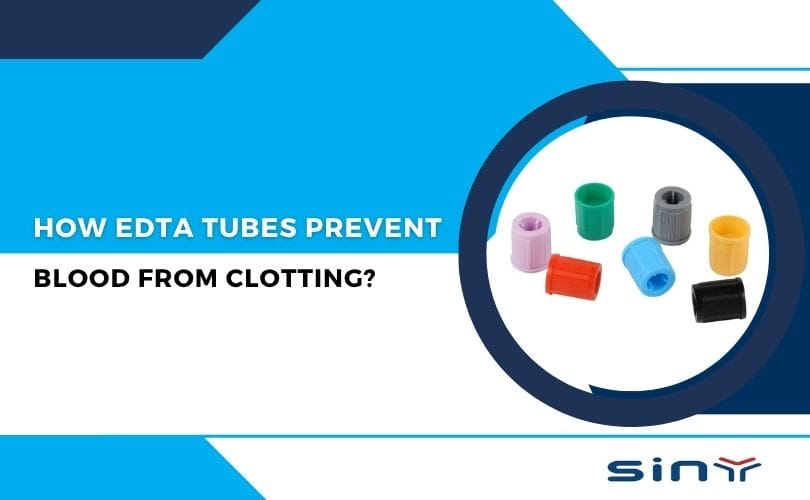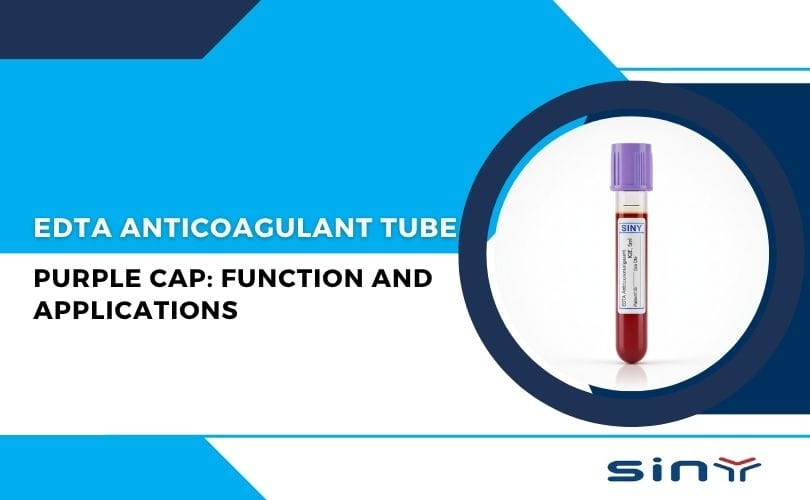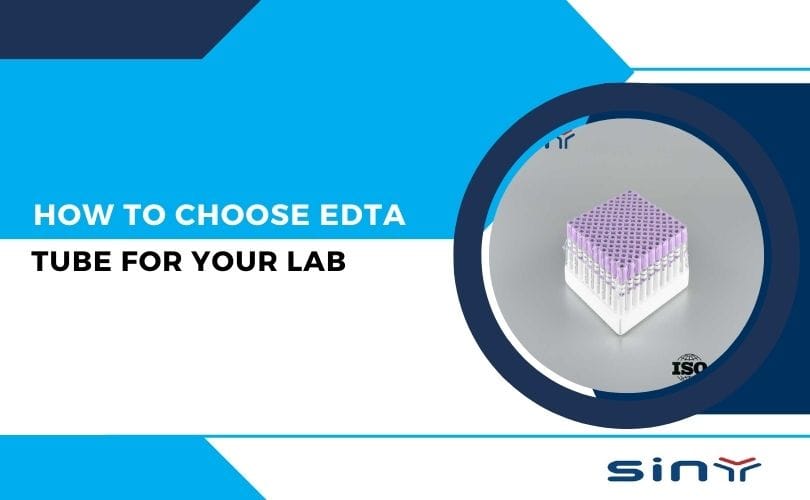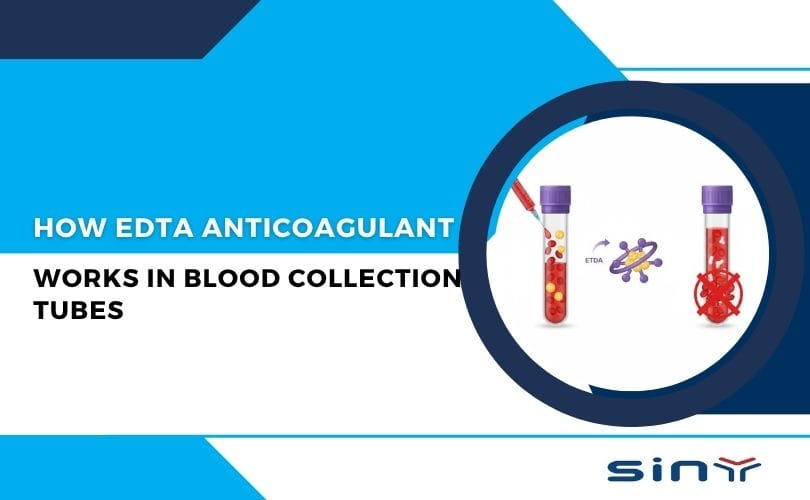Blood collection tubes are essential tools in medical diagnostics, and the purple top tube is one of the most commonly used. The purple top tube contains EDTA (Ethylenediaminetetraacetic acid), a key anticoagulant that prevents blood clotting. This blog will explore how EDTA in purple top tubes works, its applications, and why it is a critical component in blood collection. Whether you’re a medical professional or simply curious about the science behind blood tests, this guide will provide a detailed understanding of EDTA’s role in purple top tubes.
What is a Purple Top Tube?
The purple top tube is a vacuum blood collection tube specifically designed for hematology tests. It is easily identifiable by its lavender or purple cap, which indicates the presence of EDTA. These tubes are widely used in laboratories for tests like complete blood counts (CBC), blood typing, and other hematological analyses.
The purple top tube is part of the EDTA tube family, which includes other variations like the lavender top EDTA blood collection tube. These tubes are manufactured under strict quality standards, such as ISO 13485, ensuring their reliability and safety in medical settings.
For more information on the purple top blood collection tube, visit this link.
What is EDTA and How Does It Work?
EDTA (Ethylenediaminetetraacetic acid) is a synthetic compound that acts as a chelating agent. It binds to calcium ions in the blood, which are essential for the coagulation process. By removing calcium ions, EDTA effectively prevents blood clotting, ensuring that the blood sample remains in a liquid state for accurate testing.
This mechanism is crucial for hematology tests, as clotted blood can lead to inaccurate results. EDTA also helps preserve the integrity of blood cells, preventing them from breaking down or altering their shape during storage.
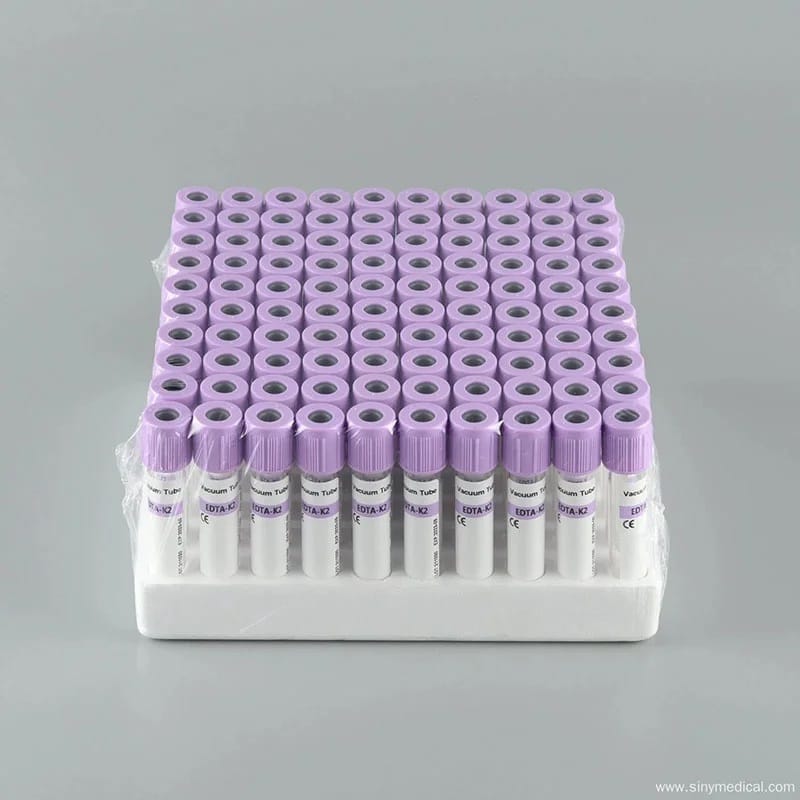
It’s all about chemistry.
When blood enters the tube, EDTA immediately reacts with calcium ions in the plasma. Calcium is one of the most important cofactors in the clotting cascade. By “chelating” (binding) calcium, EDTA prevents the formation of fibrin, which is the protein mesh that clots blood.
This means your blood sample remains:
Unclotted → perfect for microscopic examination.
Stable → prevents cellular degradation.
Accurate → preserves morphology of red cells, white cells, and platelets.
That’s why if you’re getting a Complete Blood Count (CBC), the lab will always use a purple or lavender top EDTA tube.
To learn more about EDTA tubes for blood collection, check out this page.
Applications of EDTA in Purple Top Tubes
EDTA in purple top tubes is primarily used for hematology tests, but its applications extend beyond that. Here are some key uses:
- Complete Blood Count (CBC): This test measures red blood cells, white blood cells, hemoglobin, and platelets. EDTA ensures that the blood sample remains unclotted, providing accurate results.
- Blood Typing: EDTA helps maintain the integrity of blood cells, which is essential for determining blood groups.
- Molecular Diagnostics: EDTA is used in genetic testing and DNA analysis, as it preserves the DNA in the blood sample.
For a detailed look at the purple cap vacuum blood collection PET glass EDTA K2 K3 tube, visit this link.
Advantages of Using EDTA in Purple Top Tubes
The use of EDTA in purple top tubes offers several benefits:
- Prevents Clotting: By binding calcium ions, EDTA ensures that the blood sample remains liquid, which is crucial for accurate testing.
- Preserves Cell Morphology: EDTA maintains the shape and structure of blood cells, preventing them from breaking down.
- Wide Range of Applications: From hematology to molecular diagnostics, EDTA is versatile and reliable.
To explore more about EDTA tubes, visit this category page.
How to Use Purple Top Tubes Correctly
Proper usage of purple top tubes is essential to ensure accurate test results. Here are some guidelines:
- Fill the Tube Completely: Underfilling or overfilling the tube can affect the concentration of EDTA, leading to inaccurate results.
- Mix Gently: After collection, invert the tube 8-10 times to ensure proper mixing of EDTA with the blood.
- Store Correctly: Keep the tube at the recommended temperature to preserve the integrity of the sample.
For more tips on using purple top blood collection tubes, visit this link.
How Are EDTA Purple Top Tubes Manufactured?
Ever thought about how these tubes are made? They’re not just plastic or glass containers. Each tube undergoes a precise manufacturing process that includes:
Tube material preparation – either high-quality PET plastic or glass.
EDTA coating – applied in exact concentrations for consistent anticoagulant effect.
Vacuum sealing – ensures precise blood volume collection.
Sterilization – guarantees safety and prevents contamination.
Quality control testing – every batch is tested for anticoagulation effectiveness.
You can learn more about the manufacturing expertise of EDTA Tube by visiting their About Us page
Wrapping It Up
So, there you have it—how EDTA in purple top tubes work and why they’re the hidden champions of medical diagnostics. From preserving your blood cells to ensuring doctors get accurate results, these tubes are indispensable in every hospital and lab around the world.
If you’re curious about the latest designs, check out the Purple Top Blood Collection Tubes and the wide range of EDTA tubes offered at EDTA Tube.
FAQs
Why is EDTA used in purple top tubes?
Because it binds calcium and prevents clotting, making it ideal for hematology tests.
Can EDTA tubes be used for glucose testing?
Not really. For glucose, labs prefer fluoride/oxalate tubes because they stop glycolysis.
What’s the difference between purple and lavender top tubes?
Functionally, they’re the same—just different naming conventions depending on region or manufacturer.
How long can blood remain stable in EDTA tubes?
Generally, CBC samples should be tested within 24 hours for best results.
Are K2 and K3 EDTA interchangeable?
Both prevent clotting, but K2 is preferred for preserving cell morphology.


